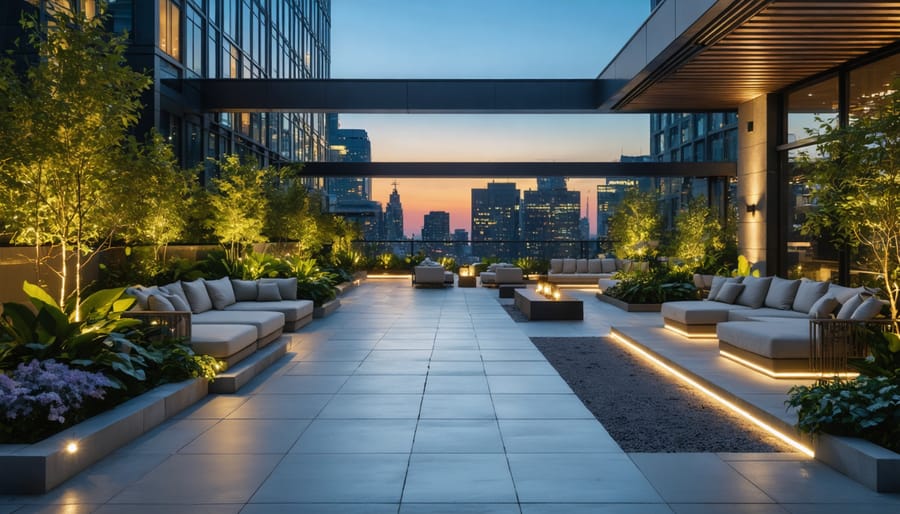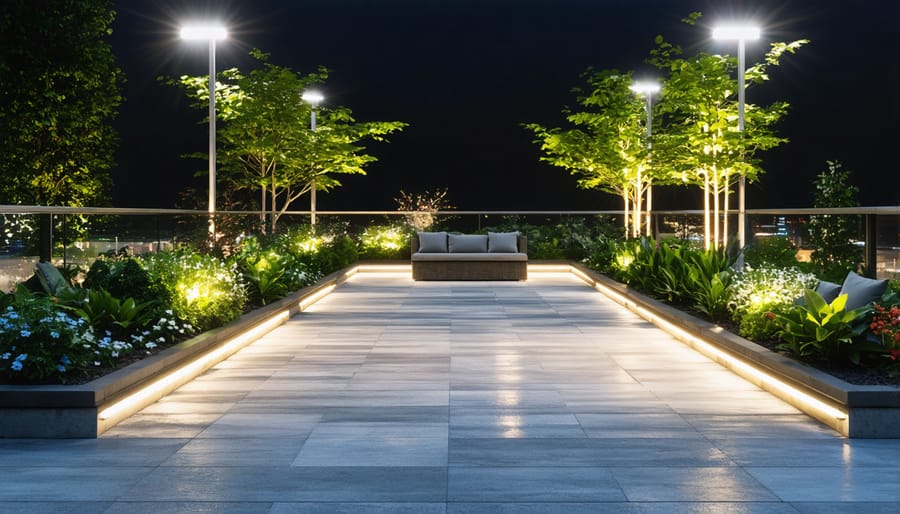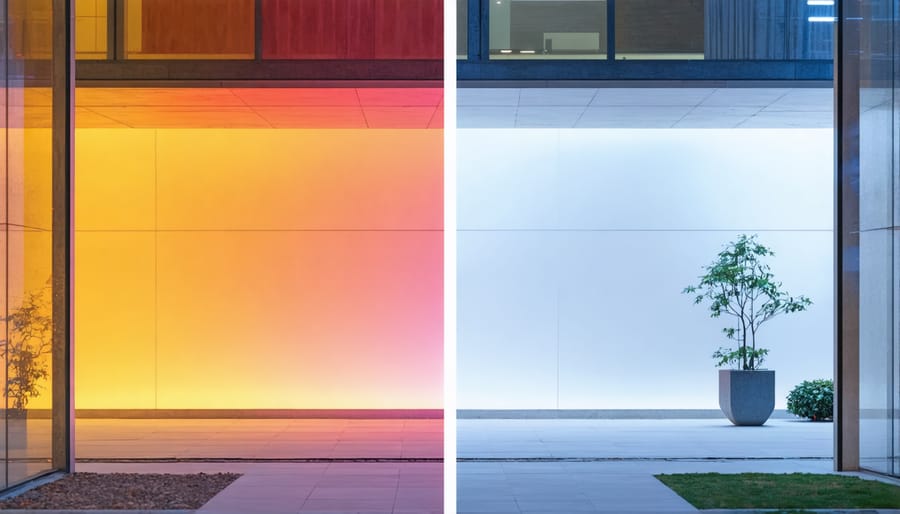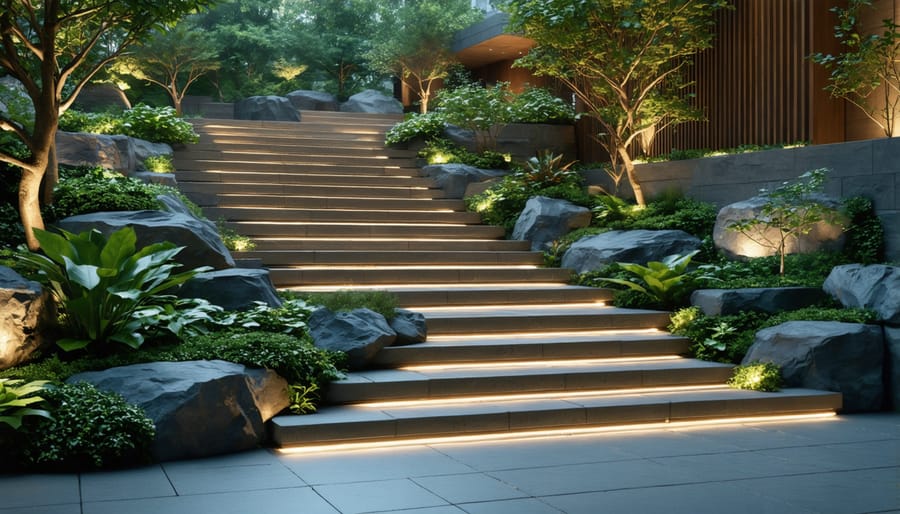
Transform your urban landscape into a captivating nighttime destination with strategically placed outdoor lighting that balances beauty, safety, and environmental consciousness. Modern urban lighting design goes beyond mere functionality, creating immersive experiences that enhance property value while reducing light pollution and energy consumption.
Professional outdoor lighting systems integrate smart controls, energy-efficient LED technology, and architectural elements to craft distinctive atmospheres that define spaces and guide movement. Whether illuminating a bustling commercial district or a private residence, proper lighting placement creates depth, highlights architectural features, and establishes welcoming environments that invite exploration after sunset.
From wall-mounted sconces and bollard lights to hidden uplighting and innovative path markers, today’s urban lighting solutions offer unprecedented control over how we experience outdoor spaces. By combining practical illumination with artistic design principles, property owners can create sophisticated nighttime environments that enhance security while delivering memorable aesthetic impact.
Effective urban outdoor lighting relies on a strategic layered approach that combines three essential elements: ambient, task, and accent lighting. Ambient lighting serves as your foundation, providing overall illumination that ensures safe navigation through spaces like walkways and common areas. This base layer typically includes post lights, wall-mounted fixtures, and strategically placed floodlights.
Task lighting focuses on specific functional areas where activities take place, such as dining spaces, entrance ways, or recreational zones. These targeted fixtures ensure adequate brightness for practical use while contributing to the overall ambiance. Consider adjustable spotlights or pendant lights for versatile task lighting solutions.
Accent lighting adds the final decorative touch, highlighting architectural features, landscaping elements, or artwork. Low-voltage LED strips, well lights, or directional spotlights can create dramatic shadows and emphasize textures, transforming ordinary spaces into captivating nighttime environments.
By carefully balancing these three layers, you can create a dynamic outdoor space that’s both functional and aesthetically pleasing. The key is to ensure each layer complements the others while maintaining appropriate light levels for safety and comfort.

Light temperature plays a crucial role in creating the perfect outdoor ambiance, significantly impacting both mood and functionality. Measured in Kelvins (K), color temperature ranges from warm (2700K-3000K) to cool (5000K-6500K). Warm lighting creates an inviting, cozy atmosphere ideal for entertainment areas and dining spaces, making guests feel comfortable and relaxed.
For enhanced security and visibility, cooler temperatures around 4000K work best in pathways and entrances. These brighter, whiter lights improve facial recognition and make obstacles more visible. However, finding the right balance is essential – too cool a temperature can create a harsh, institutional feel that detracts from your property’s charm.
Consider implementing a mixed approach by using warmer lights for social spaces and decorative features while reserving cooler temperatures for functional areas. Modern LED systems often allow for temperature adjustments, enabling you to adapt your lighting scheme for different occasions or seasons. This flexibility ensures your outdoor space remains versatile and welcoming throughout the year while maintaining optimal visibility and security.

LED lighting systems have revolutionized urban outdoor illumination, offering an intelligent blend of efficiency and aesthetics. These modern lighting solutions consume up to 75% less energy than traditional lighting while lasting significantly longer, making them one of the most popular eco-friendly outdoor solutions available today.
Property managers and homeowners particularly appreciate LED systems’ versatility in creating layered lighting effects. With options ranging from warm white to cool daylight temperatures, LEDs can be strategically placed to highlight architectural features, enhance security, and create inviting outdoor spaces. Their directional lighting capabilities reduce light pollution, ensuring illumination reaches intended areas without wasteful scatter.
The practical benefits extend beyond energy savings. LED systems require minimal maintenance, with bulbs lasting up to 50,000 hours. Their durability in various weather conditions makes them ideal for year-round outdoor use. Many modern LED systems also offer smart controls, allowing property owners to adjust brightness levels and create automated schedules through mobile apps.
When properly implemented, LED lighting systems provide the perfect balance of functionality and ambiance while contributing to sustainable urban development.
Modern outdoor lighting has evolved beyond simple on/off switches, embracing smart lighting solutions that offer unprecedented control and efficiency. These intelligent systems allow property owners to manage their outdoor lighting through user-friendly smartphone apps or centralized control panels.
Timer functions enable automatic scheduling, ensuring lights activate at sunset and dim or switch off during late-night hours. Motion sensors add both security and energy efficiency by brightening pathways and entrance areas only when movement is detected. Some systems even integrate with weather apps to adjust brightness levels based on natural light conditions or incoming weather patterns.
Color-changing LED technology lets you customize the ambiance for different occasions or seasons. Whether you’re hosting a summer garden party or creating a cozy winter atmosphere, these smart controls allow instant adjustments with a simple tap.
Energy management features help track power consumption and optimize usage patterns. Many systems offer detailed reports and suggestions for reducing energy costs while maintaining desired lighting effects. With zone control capabilities, you can manage different areas independently, creating the perfect balance of functionality and atmosphere across your entire outdoor space.
Path and step lighting serves as both a crucial safety feature and an elegant design element in weather-proof outdoor living spaces. When illuminating walkways, it’s essential to strike the perfect balance between functionality and aesthetic appeal. Low-voltage LED path lights, positioned 6-8 feet apart, create an inviting guidance system while preventing dark spots that could pose tripping hazards.
For optimal safety, consider installing motion-sensor lights along frequently traversed paths, particularly near steps and elevation changes. These smart additions not only enhance security but also contribute to energy efficiency. Opt for fixtures with warm color temperatures (2700-3000K) to maintain a welcoming ambiance without creating harsh glare.
Modern path lighting options include recessed step lights, bollard fixtures, and ground-level markers. When selecting fixtures, choose weather-resistant materials like copper, brass, or powder-coated aluminum to ensure longevity. Remember to angle lights downward to minimize light pollution and protect the night sky visibility.
For a cohesive look, coordinate your path lighting with other outdoor fixtures while maintaining consistent illumination levels. This creates a harmonious flow throughout your outdoor space and ensures safe navigation during evening hours. Consider incorporating dimmers or smart controls to adjust lighting levels based on time of day or specific occasions.

Feature and accent lighting transforms ordinary outdoor spaces into captivating environments by highlighting architectural elements and landscape features. Strategic placement of uplights can emphasize the texture of brick or stone walls, while grazing techniques create dramatic shadows that bring depth to textured surfaces.
For maximum impact, consider installing well lights at the base of columns or pillars to create vertical interest. Path lights with directional shields can illuminate decorative elements while minimizing light pollution. When highlighting water features, submersible LED lights create mesmerizing reflections and movement patterns that enhance the overall ambiance.
Trees and mature plantings become striking focal points when illuminated with spotlights or wash lights. Choose fixtures with adjustable beam spreads to control the light distribution and create the desired effect. For modern architectural features, linear LED strips can accentuate clean lines and create contemporary visual interest.
Color temperature selection is crucial for feature lighting. Warm white light (2700K-3000K) enhances natural materials like stone and wood, while cooler temperatures (4000K) can emphasize modern metallic surfaces. Consider using color-changing RGB fixtures for seasonal flexibility or special events.
Remember to layer your feature lighting with other lighting elements to create depth and balance. This prevents isolated “hot spots” and ensures a cohesive lighting design that enhances your property’s best features while maintaining practical functionality.
Urban ambiance outdoor lighting transforms ordinary spaces into captivating environments that enhance both beauty and functionality. By implementing the principles and solutions discussed throughout this guide, you can create stunning outdoor spaces that provide safety, security, and aesthetic appeal for years to come.
Remember that successful outdoor lighting combines multiple elements: proper fixture selection, strategic placement, energy efficiency, and regular maintenance. Whether you’re illuminating a residential walkway or a commercial plaza, the key lies in finding the perfect balance between practical lighting needs and atmospheric enhancement.
Consider starting with a small area to test different lighting techniques before expanding to larger spaces. Many property owners find that implementing changes gradually allows them to perfect their lighting design while managing costs effectively. Don’t hesitate to consult with lighting professionals who can provide expertise in creating the perfect ambiance for your specific needs.
By investing in quality outdoor lighting solutions, you’re not just illuminating spaces – you’re creating welcoming environments that enhance property value, improve safety, and provide enjoyment for all who visit. Take the first step today in transforming your outdoor areas with thoughtful, well-planned lighting design.